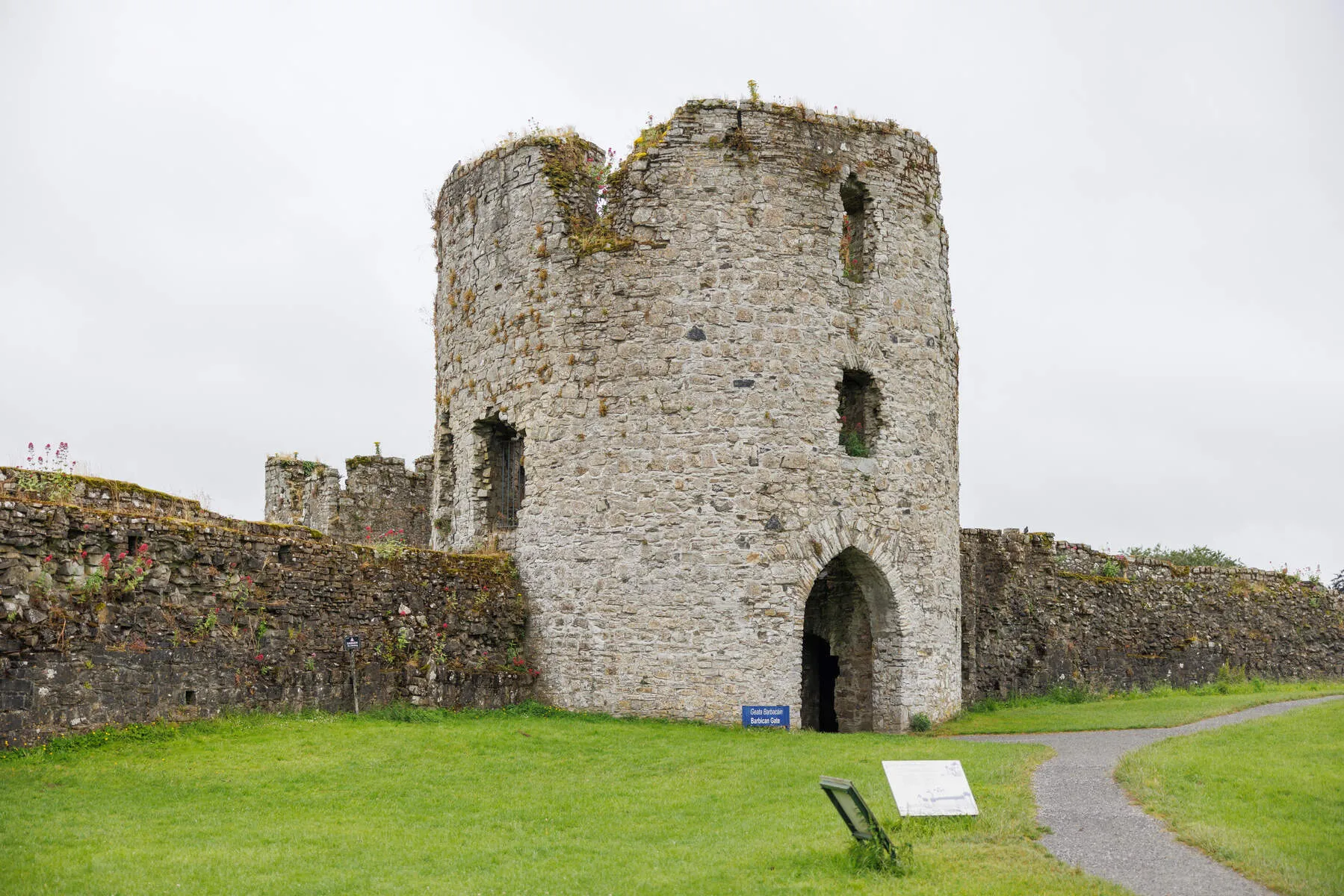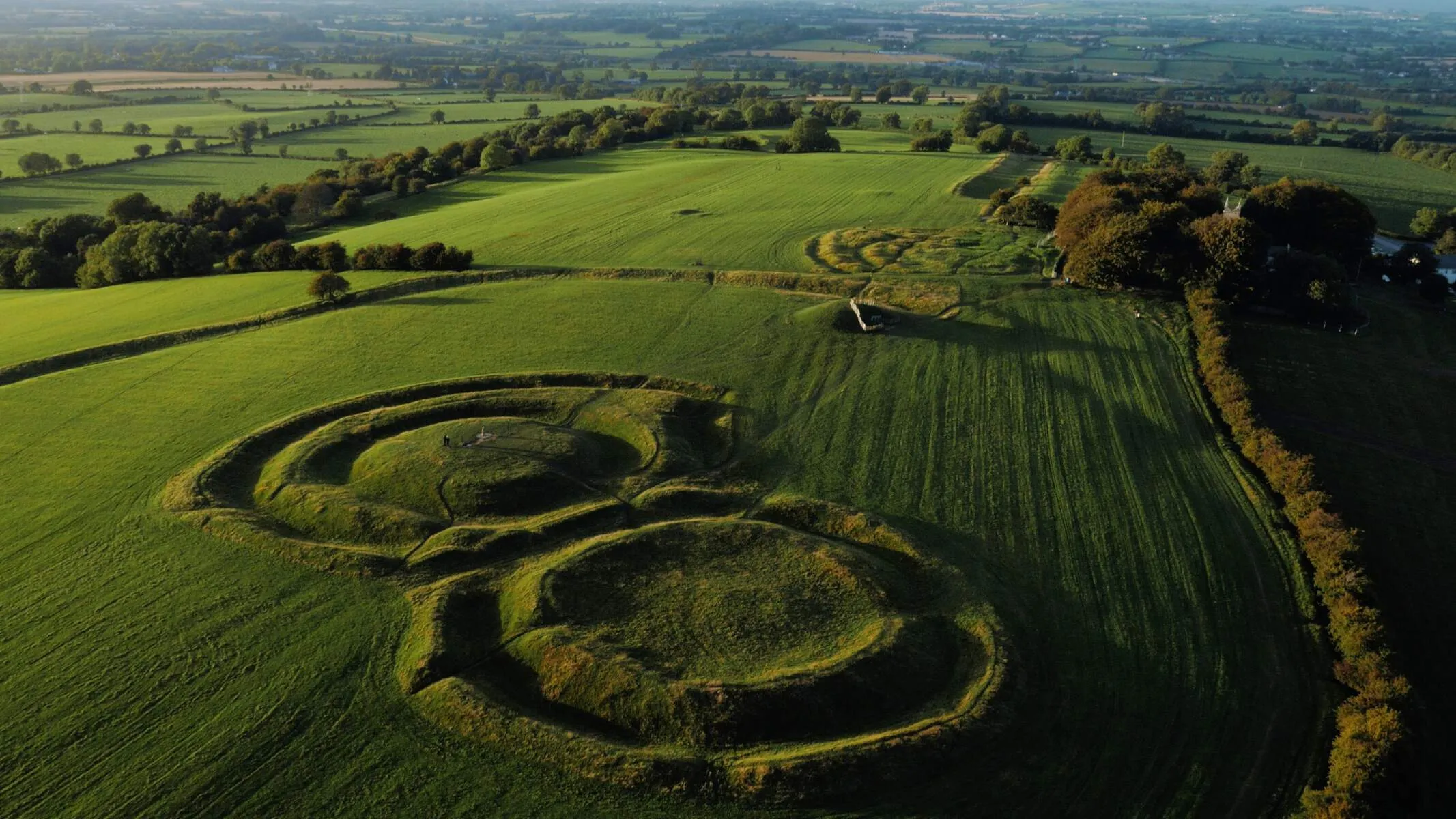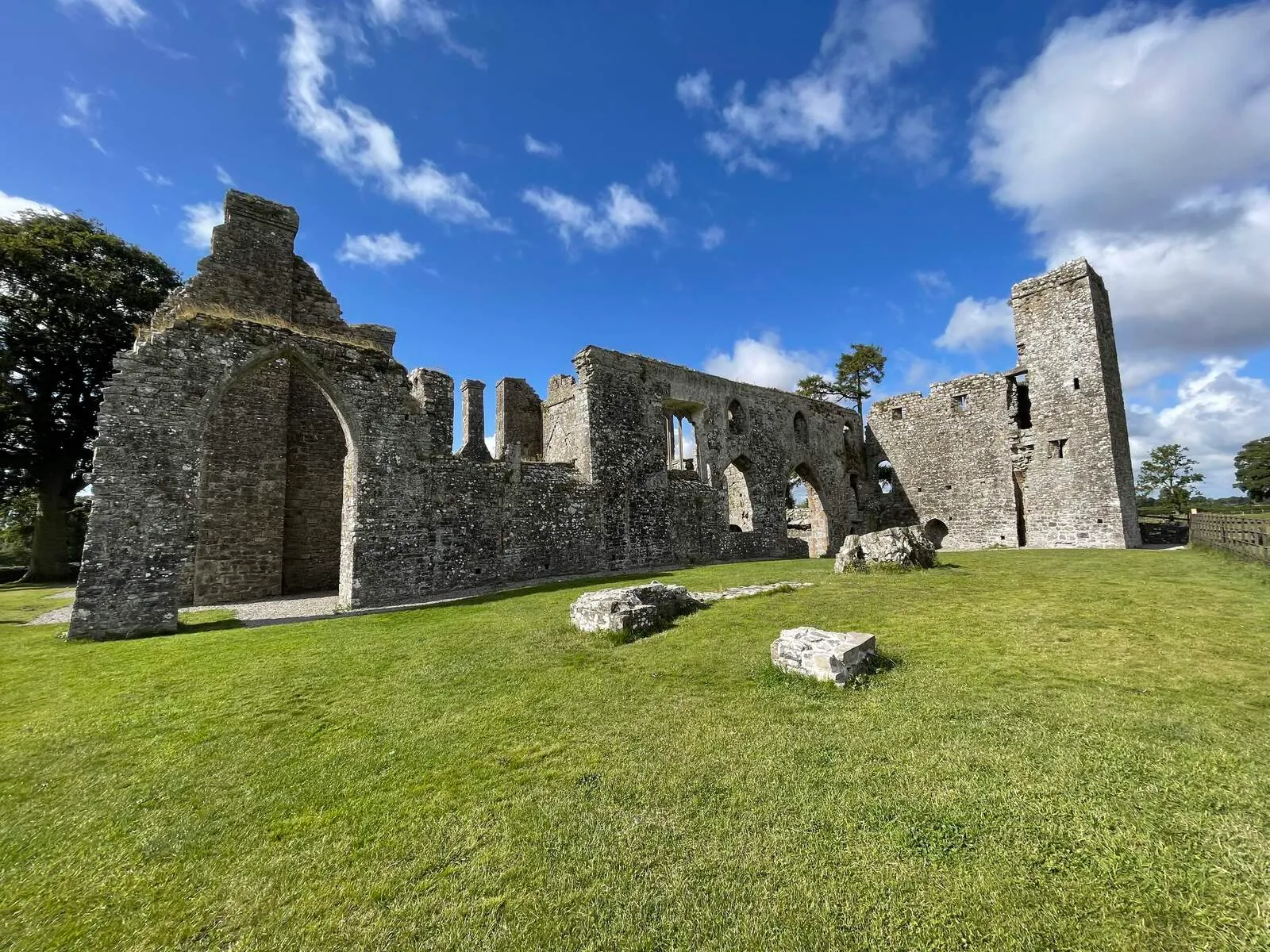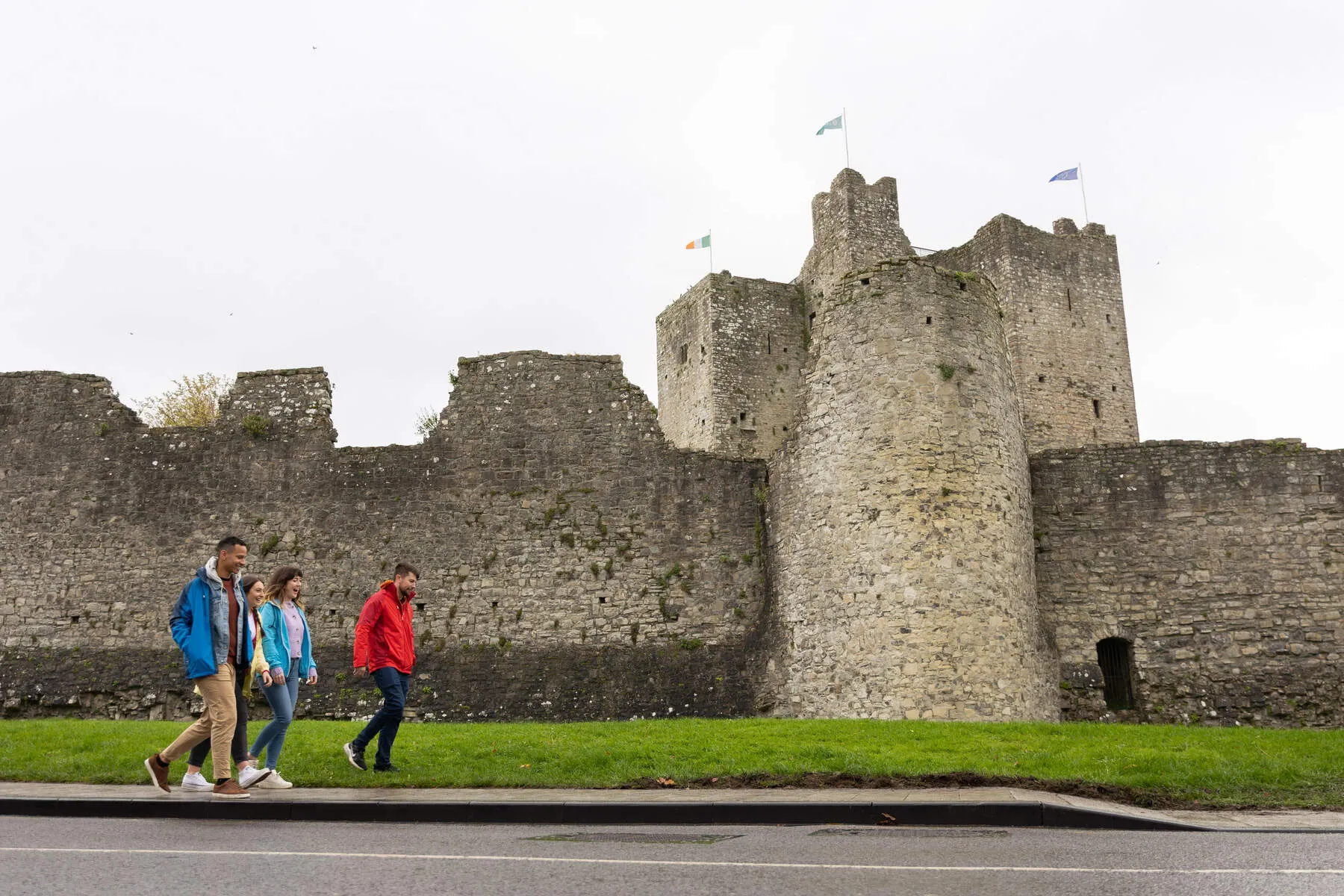Step into Trim, County Meath, where ancient stone walls whisper tales of Norman conquests and a river hums with centuries-old secrets. The star of this medieval stage is Trim Castle, Ireland's largest Norman fortress, its towering keep rising like a sentinel over the River Boyne since 1172. This UNESCO-adjacent gem wasn't just built to impress - it became Hollywood's backdrop in Braveheart, earning Trim a spot in global pop culture lore. Wander through narrow cobblestone streets and you'll stumble upon relics everywhere: the golden-spired Yellow Steeple, Ireland's oldest intact bridge (dating to 1390), and St. Patrick's own fifth-century monastic roots still lingering in quiet corners.
Trim balances history with vibrant life. The Visitor Centre lets you don chainmail or join a guided stroll led by costumed storytellers who bring the town's past to life. By day, explore Trim Castle's restored great hall or hike riverside trails; by night, unwind in cozy pubs that blend local chatter with crackling firelight. Just 40 minutes from Dublin Airport, this tidy Tidy Towns winner feels both timeless and effortlessly welcoming - perfect for those seeking a storybook slice of Ireland without the tourist crowds.
Jump to section:
Things to See and Do

Trim Castle
The largest Norman castle in Ireland, built in the 12th century by Hugh de Lacy and famously featured in *Braveheart*. Offers guided tours of its great hall, towers, and restored stonework. Open year-round with optional audio guides.
Trim Visitor Centre
Housed in Trim's Town Hall, this hub provides visitor information and tickets for Trim Castle tours. Features the interactive Medieval Armoury exhibition with hands-on displays of weapons and medieval combat.

Hill of Tara
Ancient ceremonial site and seat of Ireland's High Kings. Highlights include the Stone of Destiny, Royal Enclosure ruins, and panoramic views across Meath. Part of the Boyne Valley UNESCO World Heritage landscape.

Bective Abbey
12th-century Cistercian abbey set beside the River Boyne, featuring striking Gothic ruins and a riverside setting. Used as a filming location for *Braveheart*. Trails connect to Trim's historic sites.
St Mary's Abbey Yellow Steeple
The iconic 14th-century tower rising above Trim, known for its golden hue at sunset. Part of a former Augustinian abbey and one of the town's most photographed landmarks.
Girley Bog Walk
A 5km eco-trail through lush bogland with interpretation boards explaining local ecology. Best accessed via the N4, with walking paths and opportunities to spot wildlife like barn owls.
The Black Friary (Dominican Abbey)
13th-century Dominican monastery ruins near Trim town center. Features an intact tower and medieval tombstones, with ongoing archaeological excavations revealing monastic life details.
Wellington Monument
A 120ft stone obelisk commemorating Arthur Wellesley, Duke of Wellington. Located near Trim's town center with views over the Boyne Valley.

Trim Castle River Walk
A riverside path linking Trim Castle to Newtown Abbey ruins. Features historic bridges, wildlife habitats, and interpretive panels about medieval trade routes.
Medieval Trim Tours
Guided walks exploring Trim's castles, abbeys, and hidden alleyways. Hosted by costumed guides with insights into the town's Norman history and *Braveheart* filming locations.
The Old Bridge
Ireland's oldest intact bridge (built 1390), spanning the River Boyne in Trim. Offers views of St Mary's Abbey and Trim Castle from its medieval arches.
St Patrick's Cathedral
A 19th-century Anglican church with stained-glass windows depicting local saints. Built over an older medieval structure, it retains a Norman-era tower from Trim's original cathedral.
Boyne Valley Drive
A scenic route connecting Trim to Newgrange and Knowth (UNESCO sites), the Hill of Tara, and Slane Castle. Highlights over 5,000 years of history with guided tours available.
Irish Military War Museum
A collection of military artifacts spanning Irish conflicts from the Napoleonic era to modern times. Includes exhibits on local figures like General Sir John Gough and World War I heroes.
Trim's Medieval Town Walls
Remnants of Trim's 13th-century fortifications, including the Sheep Gate. Walking tours highlight defensive structures like gatehouses and watchtowers.
Getting There
By Air
-
The nearest international airport is Dublin Airport (DUB), which is about 43-45 minutes' drive from Trim.
-
Fly to Dublin Airport and then take a car, bus, or taxi to get to Trim.
By Bus
-
Bus Éireann operates several routes that serve Trim:
-
Route 111 from Athboy to Dublin (hourly, with more frequent services at peak times)
-
Route 111X from Clonmellon to Dublin (peak times only, Monday to Friday)
-
Route 190 from Trim to Laytown via Navan and Drogheda (every two hours, less often on weekends)
-
Route 109A from Trim to Dublin (Monday to Friday at peak times during college terms only)
-
-
Other bus operators:
-
Royal Breffni Tours operates a route to Dundalk Institute of Technology
-
Streamline Coaches operates a route to Maynooth University
-
By Car
-
Trim is located near the M3 motorway and can be accessed by car from Dublin or other nearby towns.
-
From Drogheda:
-
At the roundabout, take the 1st exit onto N51
-
Continue onto R161 and continue onto Trim
-
-
From Dublin M3:
-
Continue onto Navan Road/N3, take exit onto R156
-
Merge onto M3, at junction 6, take the R125 exit
-
Continue to follow R154
-
Take exit onto Castle Street
-
Turn right and destination will be on the right
-
-
Parking is available in Trim Town Centre, including:
-
Emmet Street Car Park: all-day parking for €3.00, 3 minutes' walk from Trim Castle Entrance.
-
Jonathan Swift Car Park: all-day parking for €3.00, 5 minutes' walk from Trim Castle Entrance.
-
Pay and display parking is also available in Trim Town Centre, Monday to Saturday, 9:00-18:00, with an hourly rate of €1.00.
-
By Train
-
The nearest train station to Trim is in Navan, which is about 10 km away.
-
From Navan, you can take a taxi or bus to get to Trim.
Events & Festivals 2025
There are currently no events listed. If you would like to add an event, please contact us.
History
The history of Trim, Ireland, is deeply intertwined with the Norman invasion of Ireland and subsequent developments under English rule.
-
Norman Conquest & Hugh de Lacy: - After the Norman invasion (1169–1170), Hugh de Lacy, appointed by King Henry II of England, was granted the Kingdom of Meath in 1172. He became the Earl of Meath and established Trim as his administrative center.
- De Lacy fortified Trim by constructing Trim Castle, which became one of the largest Norman castles in Ireland. Completed around 1206, it symbolized Norman dominance and served as a military stronghold. -
Role in the Lordship of Meath: - Trim emerged as the political and administrative hub of the Lordship of Meath, governed by de Lacy's family. The town hosted important institutions like courts and government offices, reinforcing its status as a center of Norman power.
-
Part of "The Pale": - By the 15th century, Trim was included in The Pale, the area around Dublin under direct English control. This designation highlighted Trim's strategic importance as a border town defending English interests against Gaelic Ireland.
-
Local Governance: - In later centuries, Trim retained administrative significance:
- It was an urban district under the 1898 Local Government Act, with its own council until Irish independence.
- After town councils were abolished in 2014, Trim fell under broader local authority structures.
The Yellow Steeple, a seven-storied church tower belonging to St Mary's Augustinian Abbey, is another notable landmark in the area. Other historical sites include St Patrick's Church and the Sheep Gate, which is the only surviving medieval gateway to the town. The Porch Fields, a medieval open field system, still survives and is now part of the Trim Castle River Walk.
Trim's history reflects its evolution from an early monastic center to a medieval stronghold, through periods of conflict, agricultural adaptation, and modern cultural revival.